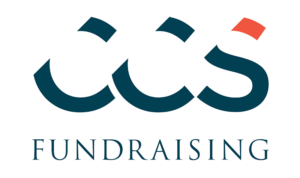At the heart of nonprofit development operations is the process of accepting, acknowledging, and recognizing gifts. Gift acceptance policies can be more than a dusty procedure manual that outlines various methods of giving. Gift acceptance policies can be actively deployed to advance equity within your institution, diversify and educate your donor base, make giving more accessible, and reinforce the values of your organization.
Why Equity Matters
According to the U.S. Trust Study of High Net Worth Philanthropy, individuals are generous regardless of race, gender, or sexual orientation. Making your gift acceptance policies more equitable is not only the right thing to do, but it is a best business practice.
Increase accountability and manage risk.
First and foremost, set a clear policy that your organization will not accept gifts with restrictions that unlawfully discriminate on the basis of race, creed, color, citizenship, national origin, religion, sexual orientation, gender, age, marital or partnership status, military status, or disability.
Make sure your donors know that you will respect the privacy of each individual and that you are working to create an inclusive and donor-centric giving program. Support donors in their journey to become a part of your mission by including a confidentiality policy.
That said, you must also prepare for the unlikely event that a gift would compromise the public trust or adversely impact the reputation, image, mission, or integrity of your nonprofit. Your organization has rights and, while it’s unlikely that you will need to take legal action, your gift acceptance policies can help to set expectations. Including “morality clauses” can help protect your institution financially and ethically by outlining the termination of recognition agreements and by stating that your organization has no obligation or liability to a donor and would not be required to return gifts.
Educate donors about what your nonprofit needs to be successful.
Donors have long been key influencers of institutional decision-making, both through their financial power and through their desire to make an impact. We all know the pitfalls: while donors may desire to restrict funds to a specific program or purpose, it may not always serve the long-term goals of the organization or the needs of the community you serve. This is not a reason to abandon major gifts. Instead, we must acknowledge that each of our donors approaches philanthropy from different points of view. At the same time, donors have a duty to stay engaged intellectually and emotionally in the advancement of the nonprofit organizations they support.
As nonprofit leaders and subject matter experts in your program and mission, you can create policies that gently lead and incentivize your donors to make high-impact gifts. Keep in mind that these policies may prompt authentic conversations and bring generative conflict. Prepare for and welcome these conversations in order to advance each donor’s understanding of your mission or the needs of the community.
One example of misguided donor education that can be remedied through gift acceptance policies is the overhead myth. The overhead myth perpetuates the idea that vital activities like staff compensation and utilities are somehow frivolous expenses, as Dan Pallotta discusses in this 2013 TED talk. Using gift policies, you can outline the importance and value of unrestricted giving, allowing nonprofit leaders to make financial decisions that serve the mission rather than the current interests of our donor base. If you do maintain categories of restricted giving, ensure that those gifts are not so narrowly restricted that they prevent effective use or administration. Having too many restrictions – either immediately or that accumulate over time – can be problematic.
Invite donor and vendor participation to increase your capacity.
Who is involved in policy development matters; it’s as important as the outcome since true inclusion requires viewpoint diversity. Consider inviting a focus group of donors to inform your gift acceptance policies and appealing to a broader donor base and expanding the ways of giving. Using your constituent database, you can also take time in advance to evaluate your donor community with questions like: “Who is already giving (and how) and who is not yet giving to your organization?” This process will make sure a diverse set of voices are informing your menu of giving opportunities.
We also know that time and staff capacity are precious in any nonprofit and that accepting these types of gifts may not always be straightforward. There are so many ways to give these days, from retirement assets, to vehicle and property donations, to stock and cryptocurrency. Consider partnerships like Donate Stock, Car Easy, The Giving Block, or Every.org to help make gift processing easier for your nonprofit.
Make your policies public.
Finally, don’t forget to make your gift acceptance policies public to ensure transparency and accountability. Making a gift acceptance policy public can also help your organization broadcast which types of gifts you are able to process. By showcasing a variety of giving vehicles, you may facilitate more diverse philanthropic activity at your organization.
This piece has been prepared for informational purposes only and is not to be construed as legal advice.
